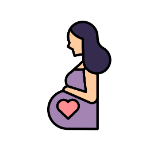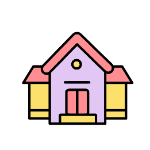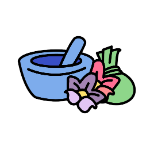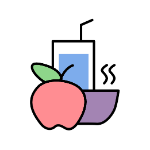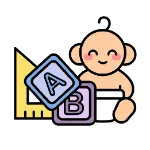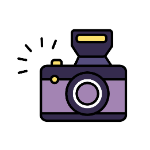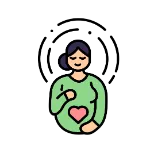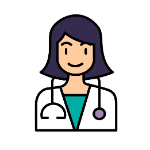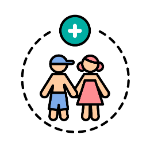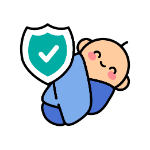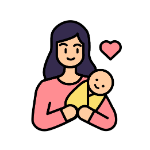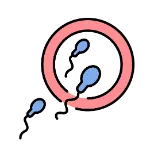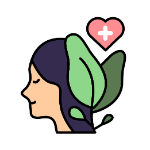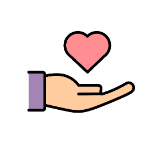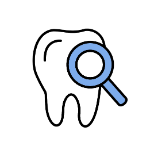
Childcare
How To Treat Your Child's Wounds & Injuries
10 min read | Updated on 06-10-2021 by HappyPreggie
Accidents are sometimes inevitable. As careful or cautious as one can be, there will always be unexpected moments that you will experience at some point in your parenthood journey.

Reports show that in every year, about one in four children all around the world suffer from a severe injury that leads to serious healthcare actions. While medical help does play a huge role, it is best for you and your partner to be prepared with some first aid knowledge in case anything happens to your beloved little ones.

Causes
First Aid

Causes
First Aid

Causes
First Aid

Causes
First Aid

Causes
First Aid

Causes
First Aid

Causes
First Aid

Causes
First Aid
For over 1 year old
For less than 1 year old

Causes
First Aid
For over 1 year old
For less than 1 year old

Causes
First Aid

Causes
First Aid

Causes
First Aid

Causes
First Aid

Causes
First Aid

Causes
First Aid

Causes
First Aid
The key to treating an injury when it is needed most is to prepare for the unexpected. It is critical to provide care and seek aid as soon as possible when a toddler or baby is facing a medical emergency. However, offering a child or a newborn first aid differs from administering treatment to an adult because their bodies are still growing, more sensitive and also more compact than an adult's. Hence, it is important for parents to know what kind of steps they should take for certain injuries in order to provide them with the right type of care.
Want to read more? Check out this information on children first-aid that you need to know and also what your baby crying pattern means.
(Image credits to Freepik)
Reports show that in every year, about one in four children all around the world suffer from a severe injury that leads to serious healthcare actions. While medical help does play a huge role, it is best for you and your partner to be prepared with some first aid knowledge in case anything happens to your beloved little ones.
Types of Injury & Home Care
#1 Burn and Scalds
(Image credits to BabyCenter)
Causes
- Steaming food or liquid
- Touching a hot plate
- Chemical spills
- Overexposure to the Sun
First Aid
- Cool the burn immediately for 10 minutes
- Avoid excessive cooling
- Protect the burnt area with light bandaging (if necessary)
- Do not break the blisters to prevent inflammation
- Do not apply ointments or creams
#2 Electrical accident
(Image credits to TechnicalSafetyBC)
Causes
- Low voltage situation that usually occurs at home
First Aid
- Disconnect the electrical power instantly
- Do not touch the child who is still holding to the short circuit
- Pull the child away using objects that do not conduct electricity
- Ensure the child is still breathing and is able to wake up
- Cool any burns
- Take the child to the hospital or call 999 immediately
#3 Bruises
(Image credits to Kidspot)
Causes
- Falling
- Blunt trauma
First Aid
- Apply pressure with something cold for 15 minutes (eg; ice pack wrapped in a towel)
- Do not place the cold directly on their skin
- If the bruise is near the eye area, go see a doctor quickly
- Minor bruises normally will heal themselves
#4 Cuts & Scrapes
(Image credits to DailyRecord)
Causes
- Falling that may cause scratches or flesh injuries
- Sharp ends from a table or cabinets that may cause cuts
First Aid
- Rinse the small cuts with water
- Apply pressure on the injured area with a clean cloth
- Apply antibiotic if the cut or scrape is not deep
- Cover the wound with a clean bandage
- Always keep the area clean and dry
#5 Splinters
(Image credits to WhatToExpect)
Causes
- Walking outside without shoes
- Wooden railings that are not smooth
- Outdoor furniture
First Aid
- Use tweezers to remove the small splinters
- After removal, wash area until it is clean
- Unremoved splinters may need paediatricians attention
#6 Puncture wounds
(Image credits to FriendshipCircle)
Causes
- A nail, knife, or sharp sticks may puncture the skin
First Aid
- Do not remove large objects from the wound
- Always seek a paediatrician for all puncture wounds
- A tetanus booster might be needed for the child
#7 Nosebleeds
(Image credits to HighwayMail)
Causes
- Injury to the face area
- Nose blowing or picking
- Individual tendency
First Aid
- Keep the child in a sitting position with their head tilted outwards
- Blow their noses to clear off any clotted blood
- Apply firm pressure to both nostrils and squeeze them for 5 minutes
- Any continuous excessive bleeding will need medical attention
#8 Unconscious/Fainting
(Image credits to Romper)
Causes
- Dehydration
- Not eating properly
- Sickness
- Playing in circular motions
First Aid
For over 1 year old
- Limit movement to head and neck when opening airways
- Tap the child gently to check for signs of response
- Position their face up and open the airway
- If the child is breathing, roll him or her to their side
For less than 1 year old
- Call 999 immediately
- Limit movement to head and neck when opening airways
- Tap the baby’s feet gently for signs of response
- Ensure the baby is facing upwards and open the airways
- Ensure the airway is open if the baby is breathing
#9 Choking
(Image credits to RSVP)
Causes
- Food
- Swallowing small objects
First Aid
For over 1 year old
- Place the child on their stomach on your lap with their head situated lower than their body
- Pat firmly between their shoulder blades for 5 times
- If it does not work, stand behind the child while making him or her stand
- Make a fist and wrap both fist around the child on their abdomen
- Thrust back and upward with constant power
- Repeat the step 5 times if necessary
For less than 1 year old
- Hold the infant’s face down while supporting their jaw and head with your hands
- Hit gently between the shoulder blades for 5 times while holding on to the neck
- If nothing happens, place the baby on their back in your lap
- Ensure their feet are across your chest
- Using your two fingers, push down on their breastbone
- Repeat the step 5 times if necessary
#10 Concussions
(Image credits to TheSun)
Causes
- Blow to the head
First Aid
- If the child vomits or complains about any pain, seek medical help immediately
- Do not leave the child alone
- Wake them up about 1-2 times during the first night after the injury
- Check for fluency in their speech
- If the child can talk and answer questions normally, then they are fine
#11 Fractured Limb
(Image credits to Parents)
Causes
- Impact
- Twisting of a limb
- Falling from a high place
First Aid
- Stop the bleeding by applying pressure on the wounded area
- Do not try to correct the twisted parts
- Hold their body for support and try to move the injured limb into a painless position
- Ensure the child feels warm and stays still
- Take the child to a doctor
#12 Dislocated Joints
(Image credits to CafeMom)
Causes
- Tripping
- Hitting hard objects
First Aid
- Support the child’s body properly and do not move the joints from their current position
- Place something cold around the injured area (not directly on the skin)
- Take the child to see a doctor
#13 Heatstroke
(Image credits to HydrationWEB)
Causes
- Overexposure to sunlight especially on the head and neck
First Aid
- Take the child away from direct sunlight
- Cool them off with cold water
- Take off any excessive layer of clothes
- If symptoms persist, seek medical help
#14 Fever
(Image credits to Shutterstock)
Causes
- Infection
- Minor illnesses like the cold
- Overactivity
- Too hot environment
First Aid
- Take the child’s temperature
- If it’s 38°C or above, then they might be having a fever
- Dress them in light clothes to make them feel comfortable
- Give them cool liquids to drink
- Bring the child to see a paediatrician if necessary
#15 Insect bites
(Image credits to Freepik)
Causes
- Unclean environment
- Not protected with insect repellents
First Aid
- Place a cold compressor or cool pack to relieve the pain and itchiness
- Put some moisturizer or ointment on the bitten area
- If the skin starts to show swelling, redness and causing your child breathing problems, quickly see a doctor
#16 Poisoning and Allergic Reactions
(Image credits to Kidspot)
Causes
- Swallowed chemicals
- Household cleaning products
- Inhaled toxic gases
- Consumed food or water that causes allergies
- Expired medical substances
First Aid
- Move the child and yourself away from the harmful chemicals
- Try to identify the amount of substance that has been consumed by the child
- Rinse it away if it is still in their mouth
- If the child is still conscious, place them in a sitting position
- Stay close to monitor their breathing
The key to treating an injury when it is needed most is to prepare for the unexpected. It is critical to provide care and seek aid as soon as possible when a toddler or baby is facing a medical emergency. However, offering a child or a newborn first aid differs from administering treatment to an adult because their bodies are still growing, more sensitive and also more compact than an adult's. Hence, it is important for parents to know what kind of steps they should take for certain injuries in order to provide them with the right type of care.
Want to read more? Check out this information on children first-aid that you need to know and also what your baby crying pattern means.
Join the largest support network for family health and well-being. Ready to get started?
Get started
